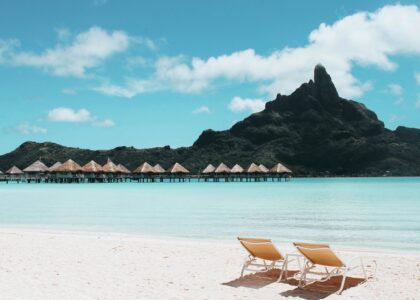Planning a trip isn’t that easy, especially if it’s your first time visiting a foreign country – like the Philippines. If you’re thinking about travelling to the Philippines, then you must already know how different it is from other countries, even OTHER Asian countries. Because of its history, the Philippines has become a melting pot of different cultures but has held up its own identity at the same time.
Whether you’re flying in for business or tropical vacation, here are the top 6 things foreigners have to know when planning a trip to the Philippines.
1 – Visa and Entry Requirements
- Everyone entering the Philippines must hold a valid passport and it should remain valid for 6 months upon arrival in the Philippines.
- Visitors from nations with diplomatic ties are granted a 21-day visa upon arrival.
- All visitors mush have onward or return tickets upon arrival in the Philippines.
- People from countries on this list are allowed to enter the Philippines without visas provided that they don’t exceed 30 days.
- For more information, visit the website for the Philippines’ Bureau of Immigration here.
2 – Food
The food in the Philippines is very different from other countries. First, there’s rice EVERYWHERE. For Filipinos, a meal is not a meal unless it’s eaten with rice. Even international stores like McDonald’s and Wendy’s adjusted their menu for the Filipino market and serve meals with rice.
Second, the flavor of Filipinos dishes is quite strong, seeing that these dishes are not complete without garlic and onion on top of other herbs. I don’t think it’s as strong as the flavor of Indian food though, but it still may be too much for a Westerner.
Since some foreigners hate the food in the Philippines, adjust your budget accordingly since Western food like hamburgers and steaks cost a lot in this side of the world. If you’re up for some adventure, go ahead and eat at the famous turo-turo – food places known to each and every Filipino. For guides on eating out in the Philippines and learning more about “turo-turo”, read this article here.
3 – Clothes/ Weather
The Philippines is one of the easiest countries to dress for. Everything is laid back, and you don’t really have to wear a suit and a tie unless you’re going to some formal occasion. There are basically two weathers you have to dress for – sunny and rainy. On a sunny day, get into a shirt/ tank top, a pair of shorts and flip flops and you’re ready to go. If it’s raining, a pair of shorts and a jacket will do just fine – just don’t forget to bring an umbrella.
Most (if not all) articles of clothing can be bought in the country for a cheap price. So, don’t bother taking everything with you on your flight as you can easily buy shorts, shirts and flipflops here.
When travelling to the Philippines, here’s a list of essential clothing:
- Tank top
- Cotton shirts
- Shorts
- A pair of pants
- Flip Flops
- Sunglasses
- Light jacket – it’s not that cold in the country but you may need one when it rains
4 – People
Many foreigners have praised Filipinas for their beauty and I agree with them. Hahaha! As a Filipina, I’m proud of my dark skin, dark black hair and black eyes. The average height for Filipinas is 5’4 and for Filipinos, 5’6. We’re not as tall as Westerners, but we have big hearts and we’re known for it all over the world. It’s very common for us to treat strangers like they’re a part of our family. This is evident by how we address people we don’t know – “kuya” (big brother), “ate” (big sister), “nanay” (means “mother” but usually used for old women) and “tatay” (father). So, don’t be surprised when some kid calls you “kuya” while you’re out on the street. It’s a lot better than being addressed “joe”, don’t you think?
Another trait you’d notice with Filipinos is that we’re very hospitable. When you become our friend, we will welcome you to our family, and boy, do we have close family ties. So close in fact, that many households have two or three generations living in them. If Westerners kick their kids out of the house when they reach legal age, many Filipinos would rather have their kids (and their kid’s family) stay at home than have them living in another house.
So, the next time you need anything – directions, help or whatnot – don’t be afraid to reach out to a Filipino. We’re more than happy to help you out.
5 – Money Matters
Staying in the Philippines is very cheap, especially if you’ve come from a country with high exchange rate to Philippines Peso (like US Dollars and Euro). To give you an idea, a family of four can comfortably live with US $1,000 per month. This includes food, transportation, electricity and water bills, and house rent. If you’re willing to let go of few comforts like AC and expensive food, you can live on much less.
Most establishments accept major credit cards for payments, and there’s an ATM in almost every block. Just be careful not to withdraw money in lonely neighborhoods – I recommend withdrawing from malls instead.
There are also a lot of money changers around, so exchanging currencies is not a problem. Also, foreigners are not allowed to go out of the country with more than 5,000 pesos. Just thought you’d want to know that.
6 – Accommodation
Most people would have booked a hotel room before flying in to the country, and this is probably the most convenient way of finding accommodation if you’re staying in major cities like Manila, Cebu or Davao. I always recommend Orbitz or Expedia for booking hotels. For provinces such as Marinduque, Sorsogon or Siquijor, I suggest looking for accommodation once you arrive there. There are two reasons for this. First, many of the accommodations in these provinces did not utilize the internet so you might never find them online. Second, accommodations with no websites are cheaper so you can save by staying with them.
This is where you “take advantage” of Filipinos’ hospitality. When you arrive in an island or a province, simply ask the cab driver to take you to the nearest affordable accommodation. When you arrive there, ask the driver if he can wait for you until you’ve checked that you like the room. This way, you’d have a ride if you decide to look for another place. Just make sure to leave the driver a tip.






